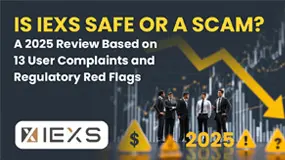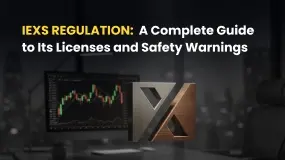简体中文
繁體中文
English
Pусский
日本語
ภาษาไทย
Tiếng Việt
Bahasa Indonesia
Español
हिन्दी
Filippiiniläinen
Français
Deutsch
Português
Türkçe
한국어
العربية
Equities tumble and U.S. dollar rises as Russia/ Ukraine fears escalate
Abstract:Asian stocks steadied on Wednesday and demand for safe-havens waned a little as investors regarded Russian troop movements near Ukraine and initial Western sanctions as leaving room to avoid a war, while a rate hike lifted New Zealands dollar.

Investors around the world lost their appetite for risk on Wednesday, with stocks selling off and the U.S. dollar gaining some ground as Ukraine declared a state of emergency amid intensifying fears of a full-scale Russian invasion.
Trading in many asset classes has been volatile since Russian President Vladimir Putins dispatch of troops earlier this week into parts of Ukraine. This triggered sanctions from Western countries and threats of more if Moscow advances further.
Oil futures, which were whipsawed during the day, settled well below their session highs and U.S. Treasury yields, while staying above Tuesdays close, were also volatile.
Ukraine declared a state of emergency and told its citizens to flee Russia, while Moscow began evacuating its Kyiv embassy. The Russian-backed separatist leader of a Ukrainian breakaway region said Ukrainian government forces should withdraw from territory that his self-proclaimed state has claimed and take their weapons with them.
A senior U.S. official said on Wednesday that Russia is as ready as it can be to launch what could be a full-scale invasion, with 80 percent of troops assembled around Ukraine in attack positions.
After rising as much as 0.7% earlier on Wednesday the MSCI World Index, a leading gauge of equity markets globally, reversed course in morning trading and deepened losses as the day wore on to finish off 1.2%, registering its lowest level since April 2021. After falling as much as 1% and rising almost 2% during the day, Brent crude settled unchanged from Tuesdays close at $96.84, while West Texas Intermediate settled up 0.21% at $92.10 per barrel after earlier falling as much as 1.9% and rising 1.7% all in the same day. [O/R]
Investors have also been grappling with the prospects of a U.S. Federal Reserve policy tightening aimed at combating surging inflation. But these worries have “been somewhat superseded by events in eastern Europe and in Russia,” said Rhys Williams, chief strategist at Spouting Rock Asset Management.
“So in the very short term, markets will go up or down based on whether (Putin) marches to Kyiv,” said Williams, adding that investors had appeared to accept Russias move into the Donetsk and Luhansk regions in Ukraine.
But if Putin “goes to Kyiv and there is a regime change and potentially a guerrilla war for the next two generations, thats a more difficult scenario and there is frankly only one person who can decide this.”
The Dow Jones Industrial Average fell 464.85 points, or 1.38%, to 33,131.76, barely above the 33,119.685 level that would have confirmed a correction.
The S&P 500 lost 79.26 points, or 1.84%, to end at 4,225.5 and the Nasdaq Composite dropped 344.03 points, or 2.57%, to 13,037.49.
Michael James, managing director of equity trading at Wedbush Securities in Los Angeles, said there was currently “very little positive validation for buying anything.”
“If anything, President Putin is digging his heels in despite the increased sanctions,” said James. “Thats really adding to elevated nervousness about further aggressive actions and what that will mean for commodities and inflation overall as well as potentially lower market prices as overall equity sentiment continues to worsen.”
Treasury yields were higher as investors monitored Russia-Ukraine events and remained concerned about inflation and a potential Federal Reserve policy mistake.
Benchmark 10-year notes last fell 13/32 in price to yield 1.9912%, up from 1.948% late on Tuesday. The 30-year bond last fell 30/32 in price to yield 2.2963% up from 2.253% while the 2-year note last fell 1/32 in price to yield 1.6016%, up from 1.587%.
Trading was also choppy in currencies with the dollar index last up 0.127% and the euro down 0.18% at $1.1305.
The U.S. dollar strengthened sharply and was last up 3.2% against the Russian rouble, more than reversing its losses on Tuesday against the Russian currency.
The New Zealand dollar NZD= jumped after the Reserve Bank of New Zealand raised interest rates and said more tightening could be necessary. The kiwi last was up 0.71% versus the greenback at $0.678.
Palladium rose 4.5% to a near six-month peak driven by fears of a hit to supply from top producer Russia. Gold added 0.6% to trade at $1,908.62 an ounce.
Russia is the world‘s third-largest producer of gold, while the country’s Nornickel is also a major producer of palladium and platinum, both of which are used in catalytic converters to clean car exhaust fumes.

Disclaimer:
The views in this article only represent the author's personal views, and do not constitute investment advice on this platform. This platform does not guarantee the accuracy, completeness and timeliness of the information in the article, and will not be liable for any loss caused by the use of or reliance on the information in the article.
Read more

Is IEXS Safe or a Scam? A 2025 Review Based on 13 User Complaints and Regulatory Red Flags
You're asking a direct and important question: Is IEXS safe or a scam? As someone who might trade with them or already does, this is the most important research you can do. While IEXS says it is a global broker with over ten years of experience, a detailed look at its regulatory status and many user reviews shows serious warning signs that cannot be ignored. The evidence suggests a high-risk situation for traders' capital. This review will examine the available information, from official regulatory warnings to concerning first-hand user complaints, to give you a clear and fact-based view of the risks involved in trading with IEXS. Our goal is to give you the facts you need to make a smart decision.

Having Trouble Getting Your Funds Out of IEXS? A Simple Guide to Delays and Solutions
Are you having trouble withdrawing funds from your IEXS account or facing delays getting your funds? Not being able to access your own capital is one of the most stressful situations any trader can face. It breaks down your basic trust with a broker. This isn't just annoying - it's a serious problem that can mess up your financial plans and cause a lot of worry. This guide goes beyond basic advice. We'll look at real user experiences and official regulatory information to give you clear answers. Our goal is to help you understand why IEXS withdrawal problems happen and show you practical steps you can take. We understand your concerns and want to give you the information you need to handle this tough situation.

FONDEX Review: Do Traders Really Face Inflated Spreads & Withdrawal Issues?
Does FONDEX charge you spreads more than advertised to cause you trading losses? Does this situation exist even when opening a forex position? Do you witness customer support issues regarding deposits and withdrawals at FONDEX broker? Does the customer support official fail to explain to you the reason behind your fund loss? In this article, we have shared FONDEX trading complaints. Read on!

IEXS Regulation: A Complete Guide to Its Licenses and Safety Warnings
When choosing a broker, every trader's biggest concern is safety and trust: is it regulated? For IEXS, the answer isn't simply YES or NO. While the company says it's regulated by trusted authorities, looking closer shows a complicated and worrying situation with mixed evidence and serious risks. What they claim on the surface doesn't match up with official warnings, license problems, and many bad user experiences. This article gives you a detailed, fact-based look into IEXS regulations, breaking down their official licenses, what their trading platform is really like, and real stories from traders who have used it. Our goal is to give you the facts so you can make a smart decision about keeping your money safe.
WikiFX Broker
Latest News
150 Years Of Data Destroy Democrat Dogma On Tariffs: Fed Study Finds They Lower, Not Raise, Inflation
FIBO Group Ltd Review 2025: Find out whether FIBO Group Is Legit or Scam?
Is INGOT Brokers Safe or Scam? Critical 2025 Safety Review & Red Flags
Trillium Financial Broker Exposed: Top Reasons Why Traders are Losing Trust Here
Amillex Withdrawal Problems
IEXS Review 2025: A Complete Expert Analysis
IEXS Regulation: A Complete Guide to Its Licenses and Safety Warnings
Oil and gas giant Wood plc sold to Dubai engineering firm
FONDEX Review: Do Traders Really Face Inflated Spreads & Withdrawal Issues?
【WikiEXPO Global Expert Interviews】Ashish Kumar Singh: Building a Responsible and Interoperable Web3
Currency Calculator



